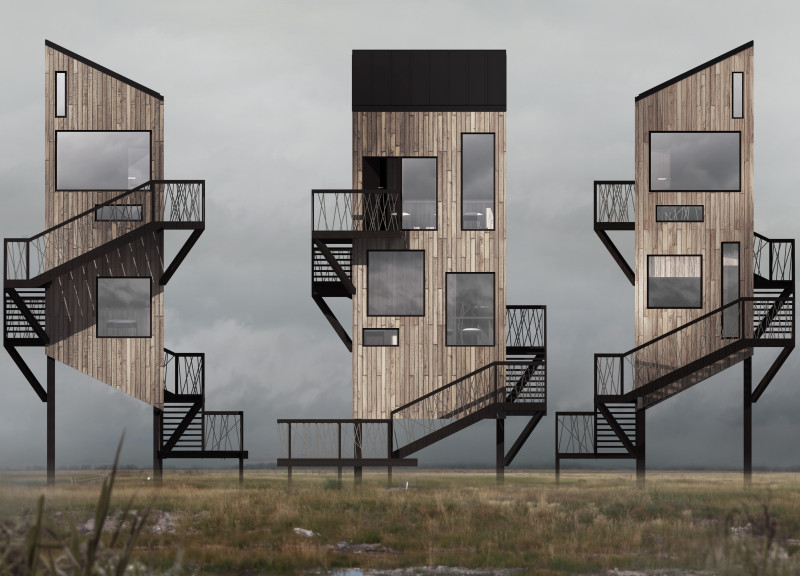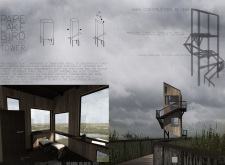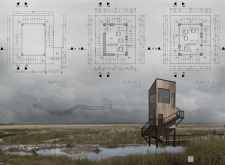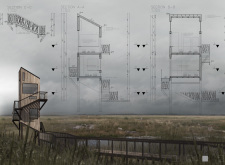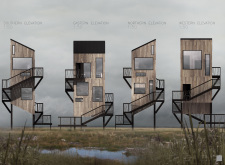5 key facts about this project
# Analytical Report on the Pare Lake Bird Watching Tower
## Overview
Located at Pare Lake, the Bird Watching Tower is designed to enhance the visitor experience while observing local wildlife. The project integrates modern architectural principles with traditional observation tower elements, achieving a balance between form and function in a natural setting. The design intention is to create a welcoming space that fosters an appreciation for the surrounding ecology.
## Spatial Organization
The tower features a two-floor layout optimized for observation and comfort. The first floor offers a large observation area with expansive windows, facilitating ample natural light and views. The second floor includes additional platforms for enhanced wildlife observation. A spiral staircase connects both levels, serving both functional and aesthetic purposes. Outdoor balconies and pathways provide further opportunities for visitor engagement with the environment.
### Material Selection
Materiality plays a crucial role in the tower's design, contributing to its functional and experiential qualities:
- **Timber**: Predominately used for structural framing and cladding, timber provides warmth and enhances the building’s connection to its natural surroundings.
- **Glass**: Windows throughout the structure allow for transparency and natural light while ensuring sound insulation and user comfort.
- **Steel**: Incorporated in staircases and structural elements, steel provides the necessary stability and safety, complementing the overall lightweight aesthetic of the tower.
## Sustainability
The design incorporates several sustainable features that minimize environmental impact. Large windows promote natural ventilation, reducing the reliance on mechanical cooling systems. Additionally, the raised foundation allows wildlife to move freely beneath the tower, preserving the local ecosystem. These elements reflect a commitment to ecological considerations throughout the design and construction process.


